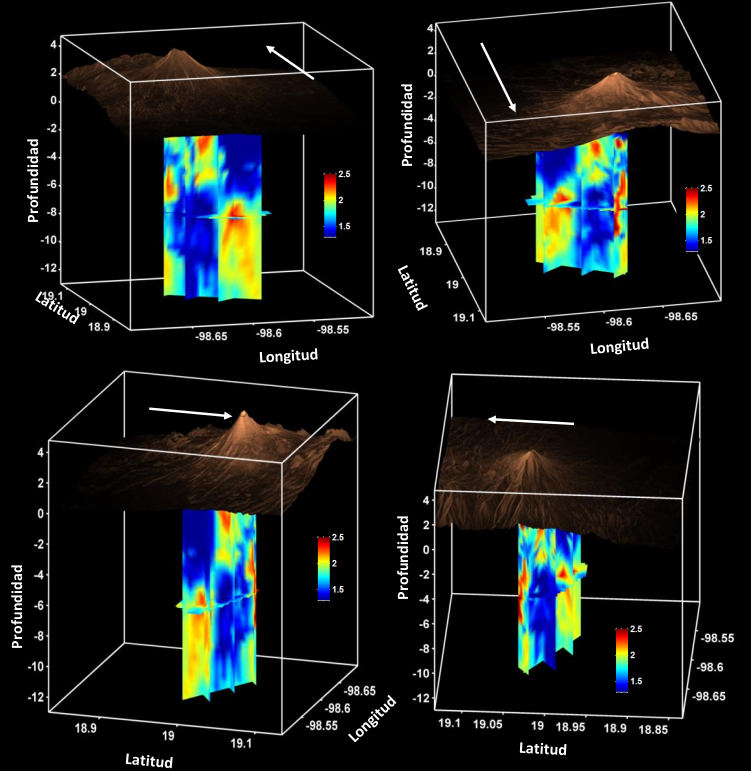Spatial variations of b-values under Popocatepetl volcano and its relation with the magmatic system
Garza-Giron, R. and Zuñiga, FR. (2014)

Besides being broadly used for earthquake hazard assessment, statistical seismology provides a way to explore the changes in the stress field of Earth's crust. In this work we investigate the capabilities of mapping the spatial variation of b-values, the slope of the frequency-magnitude cumulative distribution of occurence of earthquakes, in Popocatepetl volcano. The b-values calculated in this work are relative to the duration magnitude estimated for the detected earthquakes in Popo since 1994. In this sense, b-values in this work are only to be compared with each other and they bare no meaning when compared to b-values estimated for catalogs from other parts in the world. We interpret high b-value anomalies as volumes of high stress regimes that are possibly related to the movement of pressurized fluids through the piping system of the volcano or to high thermal gradients present in the vecinity of magmatic bodies.
A 3-D b-value tomography under Popocatepetl highlights three main areas of high stress or high heterogeneity: One towards the north flank of the volcano, the second directly underneath the vent and a third, and largest, one to the southeast. Using the results from previous geophysical and geological studies we interpret these anomalies as follows: The anomaly to the north is likely reflecting a high heterogeneity region caused by the collapse of the older volcano Nexpayantla and the load of the overlying current ediffice. The anomaly underneath the vent shows the highly stressed active conduit of Popocatepelt, which is possibly a network of interconnected fractures ("pipes") that serve as the pathway for fluids to the summit. The third and largest anomaly correlates with a low-velocity zone from a previous work (see Figure 9 of Berger et al., 2011) and is interpreted as one of the most extensive magma reservoirs of Popo. The volume and depths of this reserviour are in agreement with other gophysical anomalies found at other large stratovolcanoes in the world and that were interpreted as a magma chamber.
FOR MORE DETAILS ON THIS TOPIC PLEASE GO TO THE PUBLICATIONS SECTION AND CLICK ON THE LINK FOR MY PUBLISHED UNDERGRADUATE THESIS (EN ESPAÑOL! But with cool plots and theory on volcano seismology. SORRY...maybe I will translate it to English one day)